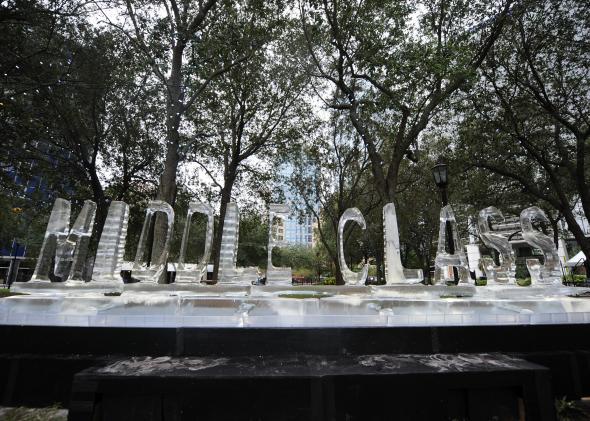When people say Americans are dividing along class lines, they usually mean it as a metaphor. But it’s also true in a literal sense. When it comes to where we live, the rich, poor, and shrinking middle class have been moving further apart. Cornell University’s Kendra Bischoff and Stanford University’s Sean Reardon report that in 1970, 65 percent of U.S. families resided in middle-income neighborhoods. By 2009, that number was down to 42 percent. Meanwhile, the fraction of households in very affluent or very poor neighborhoods more than doubled.

I first came across this chart, which is a few years old now, while reading Robert Putnam’s Our Kids earlier this month. While the conversation around the book has died down a bit, I wanted to share the chart because of how vividly it illustrates the way Americans are physically divvying themselves up by income, becoming both geographically and socially more remote from each other, and possibly perpetuating class distinctions into the next generation. In a landmark study of income mobility around the United States, for instance, Harvard University economist Raj Chetty and his collaborators found that poor children were generally less likely to rise up the income ladder as adults if they grew up in areas where low-income families were especially isolated. In other words, it’s really, really hard to escape a dirt-poor neighborhood.
The fact that the rich have walled themselves off is also troublesome, however. By self-segregating, wealthy families pool their resources in just a handful of communities. At the same time, they’re less likely to know middle-class neighbors and may be less likely to care about what’s happening in less fortunate corners of their city or town. As Bischoff and Reardon note, the more the rich keep to their own, the less reason they have to worry about public schools or parks for someone else’s kids. (They put it in dryer academic terms, but that’s the gist.)
And over the past 30 years, the rich have in fact done an even better job isolating themselves than the poor, as this additional graph from Bischoff and Reardon shows. Interestingly, well-off families were actually integrating into less wealthy neighborhoods through the 1970s. But by the Reagan era, they started gating themselves off from the rest of the country. It’s only helped ensure that everybody else’s problems aren’t theirs.

